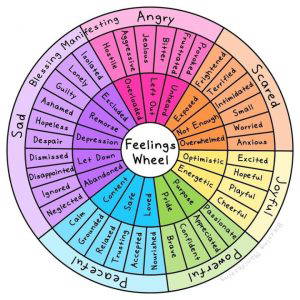If we are looking for ways to help us change the relationship we have with ourselves, beginning to connect to our feelings is a great place to start.
Feelings are the compass to our world, and if we ignore them, we risk being disconnected from our unmet needs and potential self.
Learning to listen to how we really feel is like learning a new language, we need to practice and be curious without judging.
I developed my three-step process to help clients do just this, it’s such a simple place to begin.
This three-step process to help you explore your feelings is called A-S-A
- ‘Awareness’ of them
- ‘Stay’ with them
- ‘Acceptance’ of them
STEP 1: AWARENESS:
Sometimes we are so busy and absorbed in life we are not aware of challenging feelings bubbling away in the background.
If these feeling are not acknowledged then they can make us feel tired and overwhelmed. If we consistently ignore these feelings, they get stronger and more persistent, sometimes they become panic attacks, affect our sleep and our relationships.
If we find we are getting impatient, frustrated, angry or tearful it might mean that those emotions might need to be given some space. To become aware of these feeling we need to quieten the mind and give the feelings space to bubble up.
Find a quiet space, put both feet on the ground and begin to deepen your breathing, then breathe in for 4 breaths, hold for 4 breaths and release for 4 breaths. On the hold breath try to find the beat of your heart or your pulse. It might help to put your hands on your chest so you can breathe in to them. Try to find the feelings and let them become more present; really ‘Feel’ those feelings.
STEP 2: STAY
Many people are frightened to stay with feelings as they feel they might get overwhelmed, so just be kind with yourself, this takes practice. Tell yourself that feelings are just ‘weather’, they will pass in time like clouds in the sky. Try not to judge them, there are no good or bad feelings. If we judge feelings, we repress those we feel are ‘bad’.
Sit with the feelings and stay with them as long as you can, if you can find them in your body, begin to see if they have a colour, shape or texture to them.
STEP 3: ACCEPTANCE
Once we have found our feelings it helps to just acknowledge them out loud and let them go. Hold your hand over your chest and address yourself in a way that works for you with compassion and kindness.
Example “I notice I am feeling a bit sad today, that’s ok it will pass. I fully accept myself just as I am in this moment and try to let the feeling go”
Follow with a long sigh out of the mouth to help reset the nervous system. It is so important to tell yourself that you may have been holding these feelings for a long time and they will not go immediately, if you feel slightly better then you have done really well!
Using the emotions wheel is also handy, just work from the outside in and see if the wheel can help reveal what lies below your feelings.
This podcast goes on to explore this in more detail.



